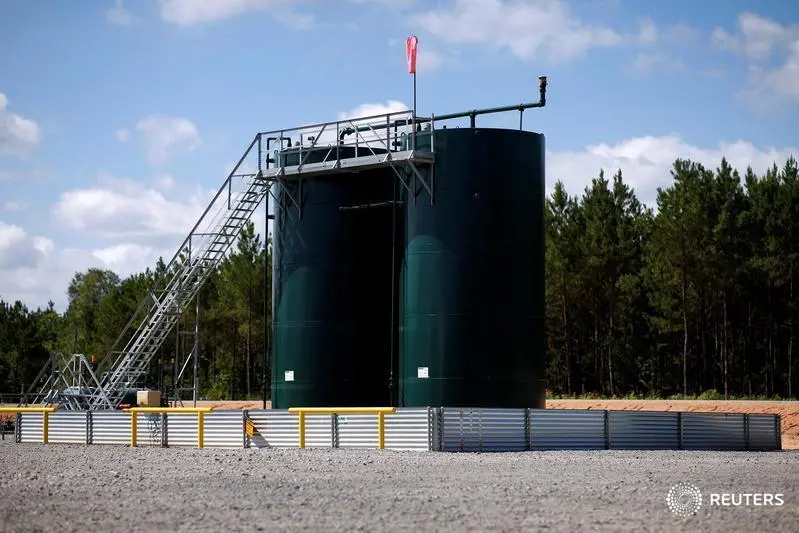PHOTO
U.S. natural gas futures rose to a two-week high on Wednesday ahead of a weekly storage report expected to show a bigger-than-usual draw as freezing wells limit output and weather forecasts suggest colder-than-normal temperatures through mid-February.
Record U.S. liquefied natural gas (LNG) exports are also supporting prices as global LNG buyers look for ways to send more fuel to Western Europe in case Russia invades Ukraine and cuts off gas supplies to the rest of the continent.
Analysts forecast U.S. utilities pulled a massive 216 billion cubic feet (bcf) of gas from storage during the brutally cold week ended Jan. 21.
That would be the biggest weekly withdrawal since last year's February freeze cut gas supplies by freezing wells and pipes in Texas and other central U.S. states, and compares with a decline of 137 bcf in the same week last year and a five-year (2017-2021) average decline of 161 bcf.
If correct, last week's draw would cut stockpiles to 2.594 trillion cubic feet (tcf), 0.8% below the five-year average of 2.616 tcf for this time of the year and the first time inventories fall below the five-year average since mid December.
On the last day as the front month, gas futures for February delivery rose 6.1 cents, or 1.4%, to $4.338 per million British thermal units (mmBtu) by 8:11 a.m. EST (1311 GMT), putting the contract on track for its highest close since Jan. 12.
That also put the front-month on track to rise for a fifth day in a row for the first time since July 2021.
Futures for March, which will soon be the front month, were up one cent at $4.02 per mmBtu.
In the spot market, frigid weather and high heating demand over the past week or so in the U.S. Northeast have kept next-day power and gas prices in New York and New England at or near their highest levels since January 2018.
Data provider Refinitiv said average output in the U.S. Lower 48 states fell from a record 97.6 billion cubic feet per day (bcfd) in December to 94.2 bcfd so far in January after wells in several regions froze, including the Permian in Texas and New Mexico, the Bakken in North Dakota and Appalachia in Pennsylvania, West Virginia and Ohio.
Even though the weather is expected to remain colder than normal through mid February, average temperatures in February are higher than January. That seasonal "warming" should cause average U.S. gas demand, including exports, to drop from 144.3 bcfd this week to 134.9 next week, according to Refinitiv.
The amount of gas flowing to U.S. LNG export plants has averaged 12.5 bcfd so far this month, which would top December's monthly record of 12.2 bcfd.
Traders said demand for U.S. LNG will remain strong while global gas prices trade well above U.S. futures as utilities around the world scramble for cargoes to replenish low stockpiles in Europe and meet surging dema
(Reporting by Scott DiSavino; Editing by Kirsten Donovan) ((scott.disavino@thomsonreuters.com; +1 332 219 1922; Reuters Messaging: scott.disavino.thomsonreuters.com@reuters.net))












